
Panang Curry and Beyond: A Love Affair with Thai Cuisine
My first encounter with Thai cuisine was a warm, fragrant bowl of panang curry—an experience that quickly ignited a full-blown obsession. Creamy coconut milk, rich red curry paste, and the delicate balance of sweet, salty, and spicy flavors swept me off my feet. From that moment, Thai food became more than just a craving—it became a gateway into the vast, intricate world of Asian cuisine. To borrow a phrase: I’ve “gone bamboo”.
Travel has only deepened this culinary story. Whenever I find myself in a new city, I make it a point to seek out the local Thai restaurant, eager to sample the familiar flavors in unfamiliar settings. Without fail, my order includes the holy trinity: pad Thai, massaman, and panang curries. What fascinates me is how no two restaurants prepare these dishes in quite the same way. There are echoes of the familiar, of course—but the ingredients, techniques, and flavor profiles vary just enough to keep me intrigued. Initially, I found this inconsistency disappointing. But in time, I came to savor the variation—the nuances that make each meal a unique interpretation of a beloved classic.
A Symphony of Ingredients
Whether it’s beef, chicken, pork or seafood, protein options are always plentiful. But it’s the vegetables that offer a true glimpse into the soul of a kitchen—and often, the season. My version of panang curry features a trio of bell pepper, onion, and broccoli, but I’ve encountered a veritable horn of plenty in restaurants across the country. Zucchini, carrots, baby corn, snow peas—each dish a painter’s palette of color and texture, dictated by what’s fresh and available.
Panang at Home – Pork, Spice, and the Joy of Adjustments
It was necessity that taught me to make pork panang curry at home. My favorite Thai spot was just too far away, and luckily, a gem of an Asian market sat practically around the corner. Recreating this dish in my own kitchen became a way to bring the restaurant experience home—with the added bonus of tailoring it exactly to my taste.
One of the perennial challenges of dining out for Thai is navigating the spice scale. Is a Level 3 mild or molten? Will Thai hot reduce me to tears or just the right kind of sweat? It’s always a delicate game of cat and mouse between my desires, the server’s description and the kitchen’s interpretation.
Cooking at home removes the guesswork. I can build the heat slowly, tasting as I go, letting the chilies bloom into the dish at just the right intensity.
Panang curry, for me, is more than a meal—it’s a memory, a passport to Asia and a delicious lesson in culinary adaptability. Every time I make it, I rediscover why I fell in love with Thai food in the first place.
Panang Curry Step-By-Step
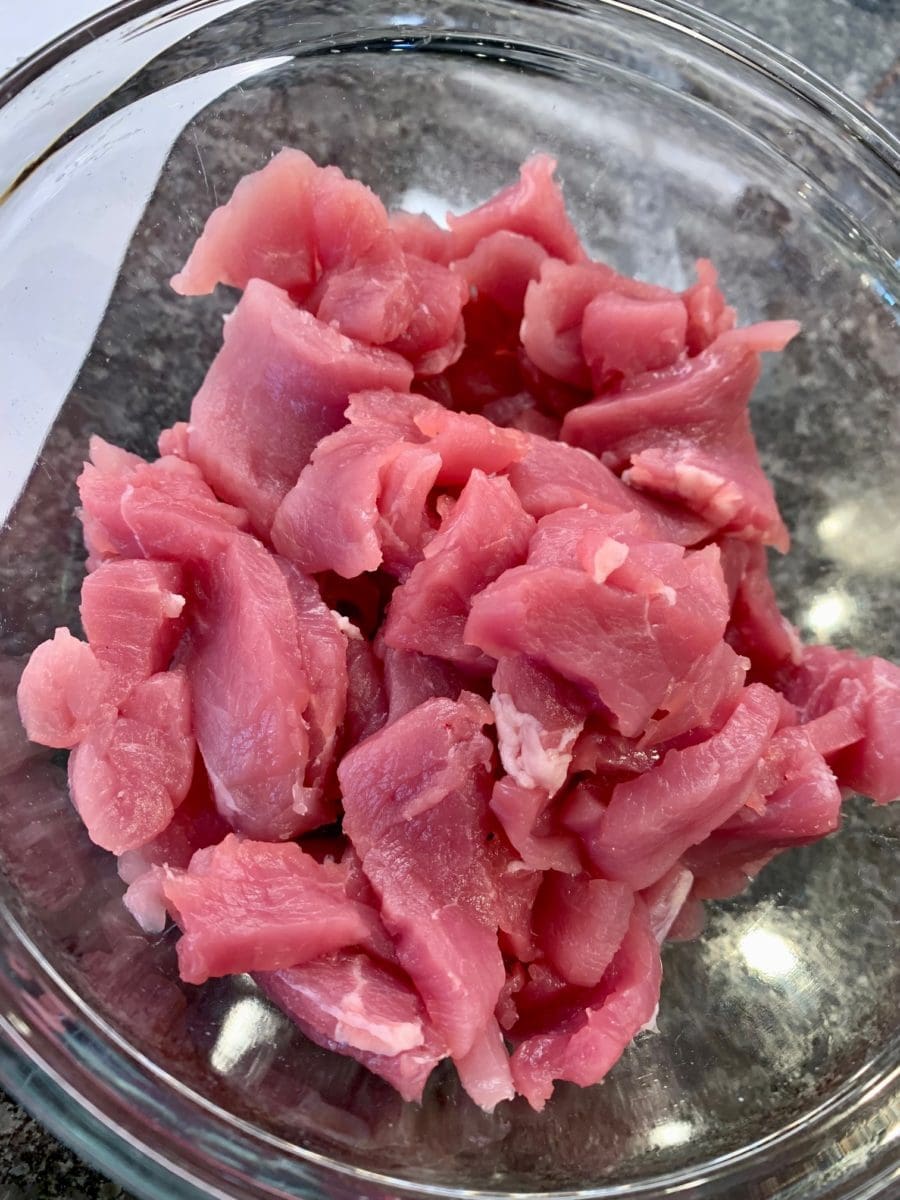
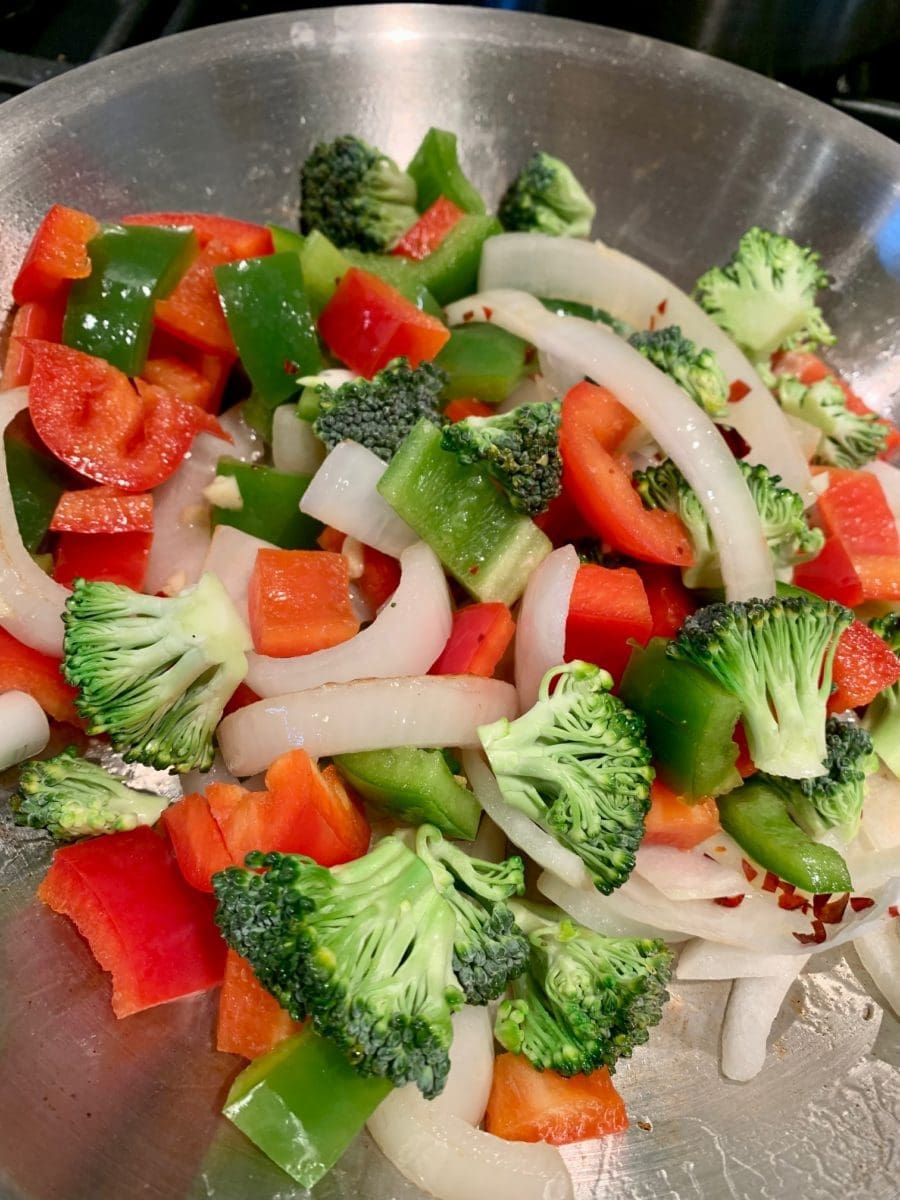

Heat 1 TBL of oil over medium heat in a rondeau pan and saute the pork until almost done.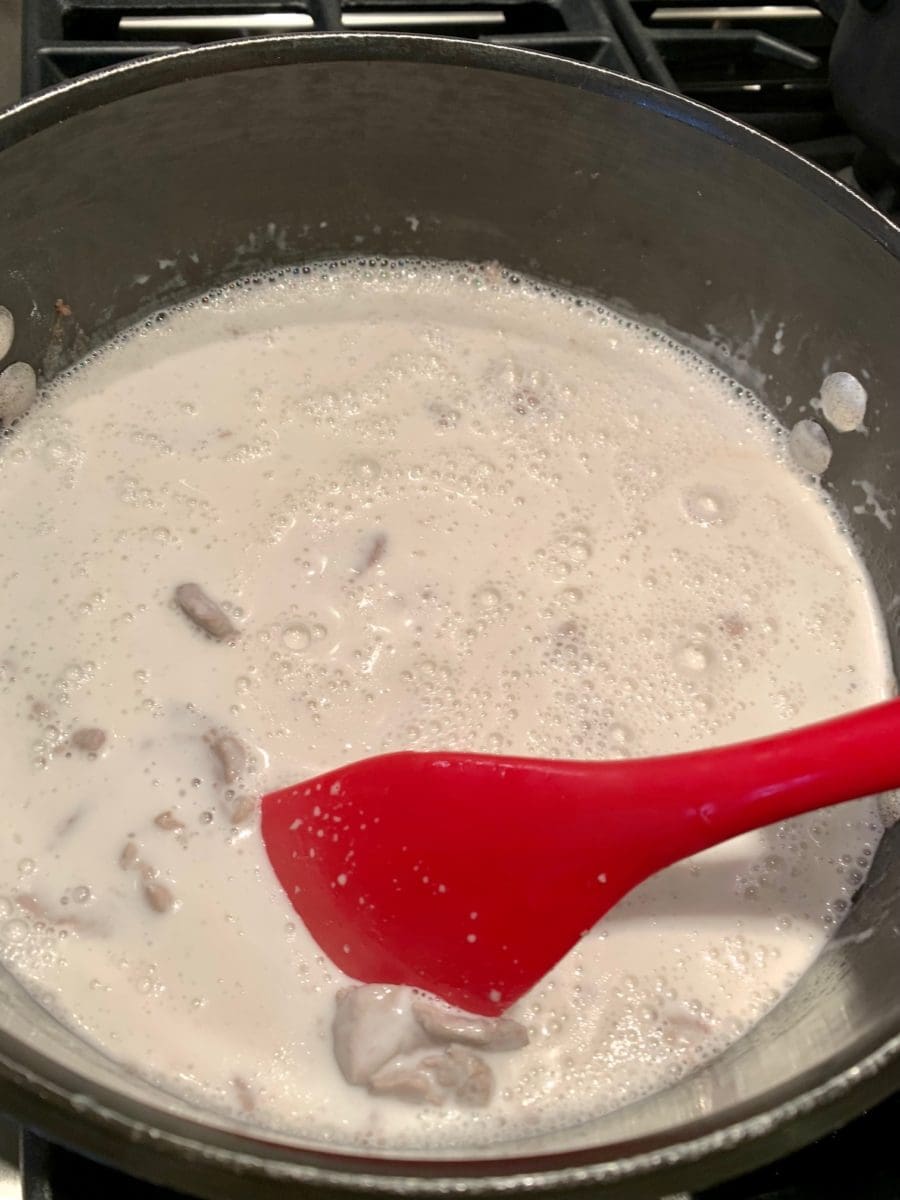
Add the hot coconut cream, stir in the fish sauce and bring to a slow boil, then reduce to a simmer.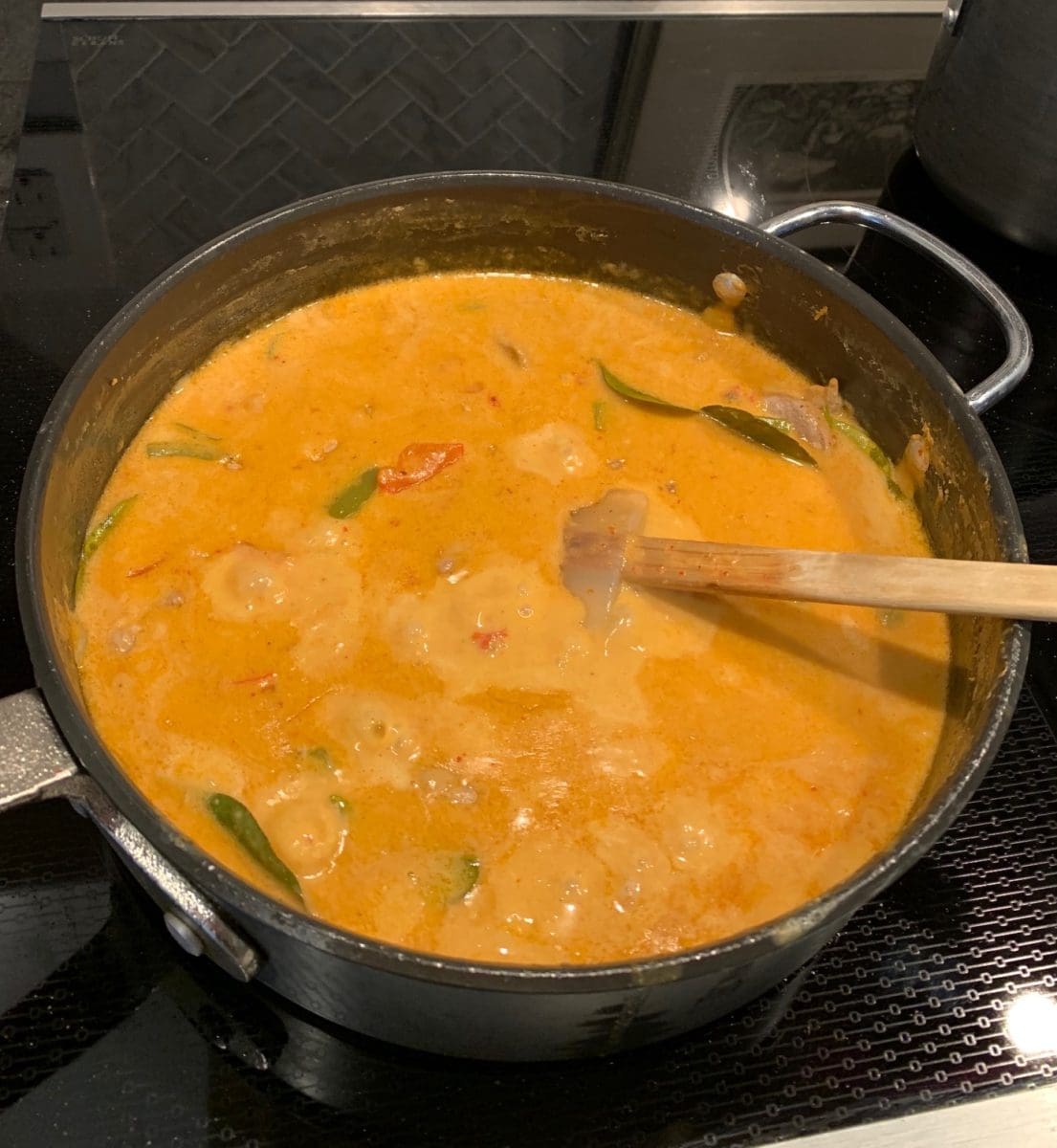
Saute the onions in sesame oil for 1 minute on low heat, then add the bell peppers, broccoli, chili peppers and garlic and cook for another 1-2 minutes. Add the panang curry paste, crushed cashews, brown sugar and peanut butter, stir simmer and reduce to intensify the flavor until the sauce begins to thicken. Add the vegetables, stir, taste and adjust pepper if necessary.
Reduce heat to low, crush the lime leaves and add them and the bay leaf. Stir and reduce or thin with coconut milk to desired finished consistency.
Taste and make a final adjustment with crushed red pepper and stir in the whole cashews.
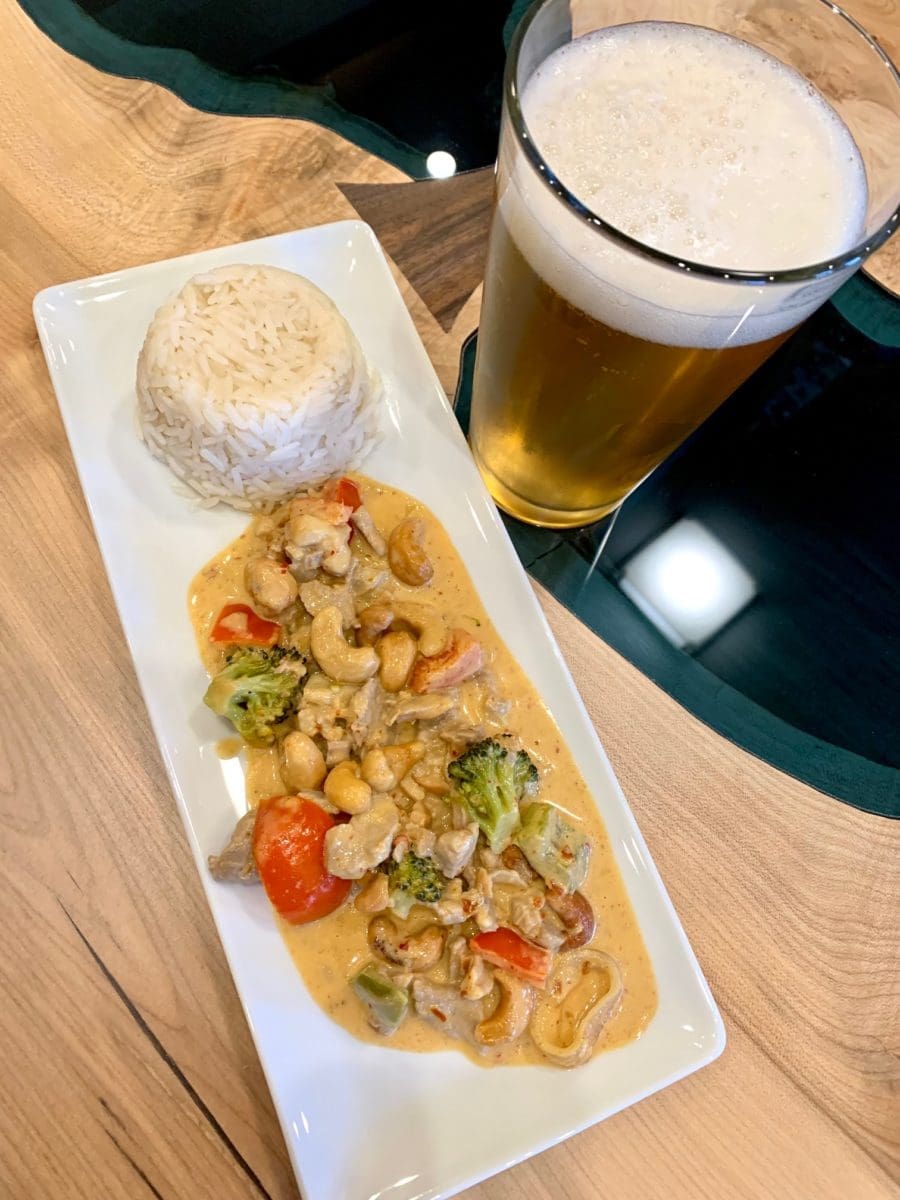
Panang Curry
Introduce yourself to Thai cuisine with this delicious, spicy cashew curry!
- Prep Time: 20
- Cook Time: 30
- Total Time: 50 minutes
- Yield: 8 servings 1x
Ingredients
- 1 lb pork tenderloin -sliced thinly into bite size pieces
- 2 TBL sesame oil – divided
- 4 oz red panang curry paste
- 1 onion – halved, sliced and separated
- 1 green bell pepper – chopped
- 2 garlic cloves – minced
- 1 red bell pepper – chopped
- 1 cup small broccoli florets
- 4 seeded and minced red Thai chili peppers
- 35 oz coconut cream
- 2 TBL fish sauce
- 2 TBL brown sugar
- 1 heaping spoonful crunchy peanut butter
- 1/2 cup crushed cashews
- 6 kaffir lime leaves
- 1/2 cup whole cashews
- 1 Thai basil leaf
- Crushed red pepper – to taste
- Coconut milk – to thin the curry if necessary
- Jasmin rice
Instructions
- Heat the coconut cream until it begins to give off steam, but do not boil
- Heat 1 TBL of oil over medium heat in a rondeau pan and saute the pork until almost done
- Add the hot coconut cream, stir in the fish sauce and bring to a slow boil, then reduce to a simmer
- Heat 1 TBL of oil in a saute pan and saute the onions for 1 minute on low heat, then add the bell peppers, broccoli, chili peppers and garlic and cook for another 1-2 minutes
- Add the panang curry paste, crushed cashews, brown sugar and peanut butter, stir simmer and reduce to intensify the flavor until the sauce begins to thicken
- Add the vegetables, stir, taste and adjust pepper if necessary
- Reduce heat to low, crush the lime leaves and add them and the bay leaf. Stir and reduce or thin with coconut milk to desired finished thickness
- Taste and make a final adjustment with crushed red pepper and stir in the whole cashews
- Serve with jasmin rice and a cold Singha beer
